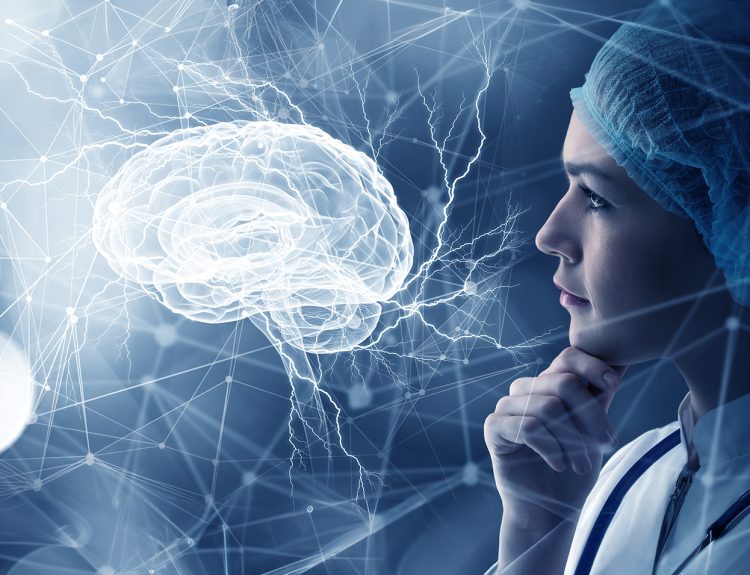Early and accurate diagnosis of neurological disorders remains a major challenge, but recent breakthroughs are reshaping what’s possible. A novel AI olfactory device is now able to detect subtle chemical signatures in body odor—specifically volatile organic compounds released through skin or sebum—that differ markedly in individuals with Parkinson’s disease versus healthy controls.
What is Parkinson’s Disease and Symptoms?
Parkinson’s disease is a degenerative nervous system disease that impairs mobility. Symptoms appear gradually, perhaps beginning with a barely detectable tremor in just one hand. Tremors are prevalent, although the disease also causes stiffness or slowness of movement. In the early stages of this disease, the face may display little or no expression. When walking, arms might not swing. Speech may become soft or slurred. Parkinson’s disease symptoms worsen with time. Although this disease cannot be cured, drugs may considerably improve the symptoms. Occasionally, doctors may recommend surgery to control specific areas of the brain and improve the symptoms.
Parkinson’s disease can affect both males and females. However, men are affected by the illness at a rate that is around half that of women. It is linked to advanced age. Although the majority of individuals with Parkinson’s acquire the illness around the age of 60, 5 to 10% of people with Parkinson’s have “early-onset” disease, which occurs before the age of 50. Early-onset Parkinson’s disease is frequently inherited, although not always, and some types have been related to particular gene alterations. This disease develops when nerve cells in the basal ganglia, a region of the brain that governs movement, get damaged or die. Normally, these nerve cells, or neurons, create dopamine, a key brain neurotransmitter. When neurons die or become damaged, they generate less dopamine, resulting in Parkinson’s movement issues. Scientists are still unsure of what causes dopamine-producing cells to die.
How the AI Olfactory Device Works?
Scientists have been working on developing gadgets that can detect Parkinson’s disease (PD) based on odor molecules on the skin. Now, researchers reported in ACS Omega have built a portable, artificially intelligent olfactory apparatus, or “e-nose,” that might potentially be used in a doctor’s office to identify the condition. This disease involves both motor and non-motor symptoms, such as tremors, stiffness, and difficulty walking. Although there is no cure, early diagnosis and treatment can enhance one’s quality of life, reduce symptoms, and increase one’s chances of survival. However, the condition is typically not detected until patients show motor symptoms, at which point they have already suffered irreparable neuron loss. Scientists have discovered that persons with this disease create more sebum (an oily, waxy material generated by the skin’s sebaceous glands), as well as more yeast, enzymes, and hormones, all of which mix to produce particular scents. Despite the fact that human “super smellers” are extremely rare, researchers employed gas chromatography (GC)-mass spectrometry to examine odor molecules in the sebum of persons with Parkinson’s disease. However, the instruments are large, sluggish, and costly. Jun Liu, Xing Chen, and colleagues intended to create a quick, easy-to-use, portable, and low-cost GC system for detecting Parkinson’s disease by scent, making it appropriate for point-of-care testing.
AI Olfactory Device: Key Research Findings on Parkinson’s Disease Patients
The researchers created an e-nose by combining GC with a surface acoustic wave sensor (which detects gaseous substances based on their interaction with a sound wave) and machine learning techniques. The researchers gathered sebum samples from 31 Parkinson’s disease patients and 32 healthy controls by swabbing their upper backs with cotton. They utilized the e-nose to examine volatile organic molecules emitted by gauze and discovered three odor compounds (octanal, hexyl acetate, and perillic aldehyde) that were substantially different between the two groups, which they used to develop a model for PD.
The researchers then examined sebum from an additional 12 patients and 12 healthy controls, discovering that the model was 70.8% accurate in predicting disease. The algorithm was 91.7% sensitive in detecting real Parkinson’s disease patients, but only 50% specific, indicating a significant percentage of false positives. When machine learning techniques were employed to assess the full olfactory profile, diagnostic accuracy increased to 79.2%. The researchers claim that before the e-nose is ready for the clinic, the team has to test it on many more people to increase the accuracy of the models, and they also need to incorporate characteristics such as race.
Treatment for Parkinson’s Disease
Deep brain stimulation, or DBS, may be useful for persons with Parkinson’s disease who do not react well to treatments. DBS is a medical treatment in which electrodes are surgically implanted into a portion of the brain and connected to a tiny electrical device placed in the chest. The gadget and electrodes painlessly stimulate the brain, therefore alleviating many of Parkinson’s movement-related symptoms such as tremors, slowness of movement, and stiffness. Because the cause of Parkinson’s disease is unclear, reliable strategies to avoid the condition are also unknown.
Parkinson’s Disease: Prevention Causes & Risks
According to certain studies, regular aerobic exercise may lessen the risk of Parkinson’s disease. Other studies have shown that persons who take caffeine, which is present in coffee, tea, and cola, are less likely to develop disease than those who do not. Green tea consumption has also been linked to a lower chance of acquiring Parkinson’s disease. However, it is still unclear if caffeine genuinely protects against this disease or if it is connected in some other manner. There is currently insufficient evidence to suggest that drinking caffeinated beverages can protect against Parkinson’s disease.
Also read
Infection Control and Patient Safety






